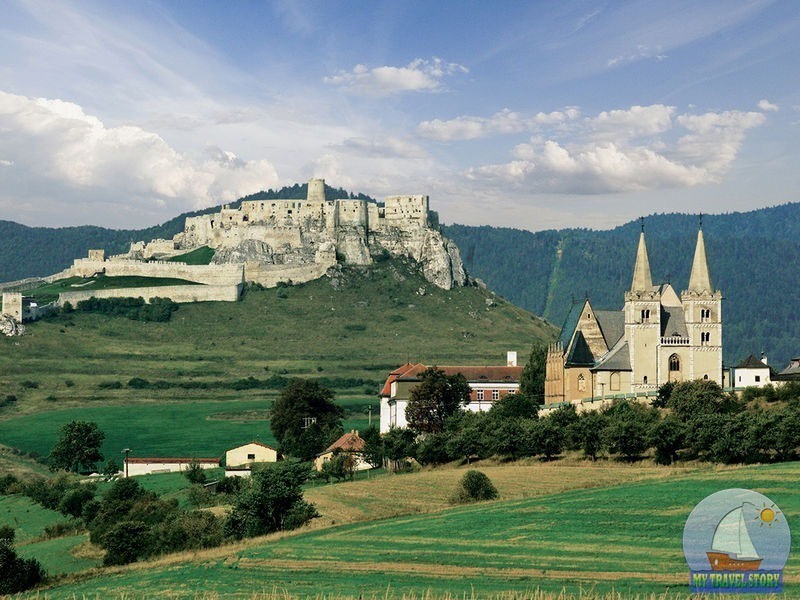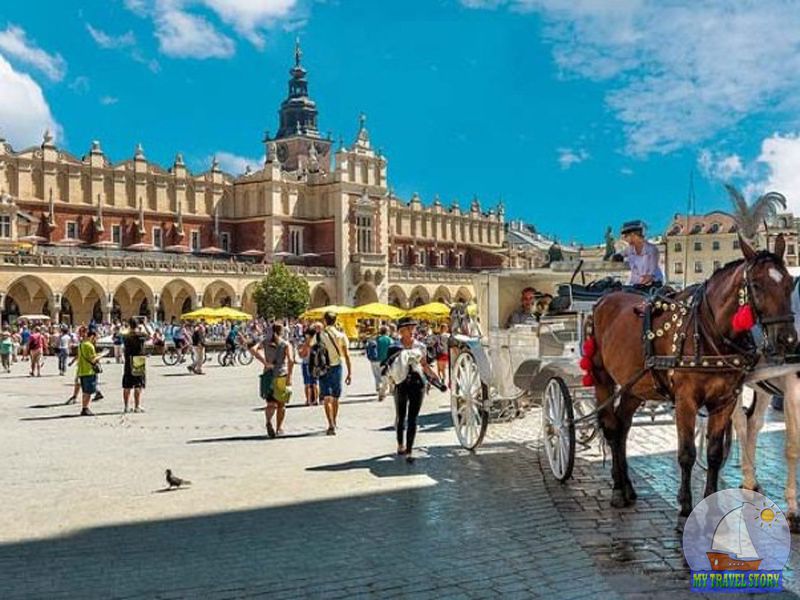
Tunisia – a country in Africa. It borders on the west with the State of Algeria, in the south-east – with Libya. In the north and east by the Mediterranean Sea. The capital – Tunis.
The population is about 10,980,000 people (2014), the majority are Arabs. The area – 163,610 sq km Official language – Arabic.
Currency – Tunisian Dinar.
Tunisia is divided into 24 Wilaya (district). Major cities of Sousse, Sfax, Gafsa, Bizerte, Gabes. Big Island – Djerba.
Amphitheatre of El Jem

Amphitheatre of El Jem – one of the most famous amphitheatres in the world, located in Tunis, on the site of the ancient city Tizdr (today El Jem). It is the third largest Roman Colosseum. Located at the crossroads of important trade routes, El Jem was once a place of mass entertainment. Up to thirty thousand spectators visited the amphitheater in anticipation of an exciting spectacle.
It was built exclusively for gladiatorial contests around 238 AD The walls, lined with mosaics, contained images of galloping horsemen, hunters and animals. On the steps of the amphitheater we were going to many audiences, and the emperor was at the height of the bed of the east entrance. Under the hundred-meter arena located gladiators rooms, premises where stacked body attorneys fighters and the cells with the bloodthirsty predators.

By the way, in the territory of El Jem was shot the famous film “Gladiator”. Centuries later, the Roman state fell under the onslaught of the barbarians, the ancient city was deserted. Since then, it has remained one amphitheater surrounded by unusual, wildlife. In VII century it began to disassemble to build a mosque, and after he was subjected to a powerful fire. Over time it has become a quarry for the city residents.
In spite of everything, the amphitheater is preserved at its best and its surroundings have a lot to see. Around it is always crowded, thanks to local trade. According to rumors in the amphitheater dungeon hidden jewels and treasures and underground roads lead to the ancient city of Mahdia. The best time to visit the Colosseum – the second half of the day. You can reach it by train from Sousse and Hammamet. Also, from Sousse, Mahdia and Monastir toward El Jem sent to the local bus called “luazh”. travel time from 30 minutes to 1 hour.
Carthage
Carthage – a city in Tunisia, founded by the Phoenicians in the IX century BC Located 35 km from the capital, it was the center of the ancient trading empire. In Carthage crossed trade routes across the Sahara and West Asia. Tourists special interest are the ruins of the ancient city.

This city was founded in the 60 years before Rome. What little is left of it today attracts many historians and archaeologists. Ruins of Carthage are arranged randomly. They can be found in various places on the site of archaeological excavations. Stop in the suburb of almost nowhere. Due to its uniqueness, Carthage was not designed for the construction of hotels.
Throughout its history the city was the capital of the eponymous state Phoenician, the former one of the superpowers of the Mediterranean. Carthage was destroyed by the Romans as a result of the Punic Wars. Over time the Romans rebuilt it again, turned into a cultural center, and the early Christian, but was followed by another destruction by vandals and then the Arabs.

Today, this ancient city is the residence of the President and the National Museum. Most of the surviving fragments refers to the I century, ie, Roman period rule. The museum houses Roman mosaics, sarcophagi, sculptures. There are also some artifacts Punic period. From later periods the ruins of churches and cathedrals.
Getting to Carthage can be on the urban railway in the direction of Tunis Gulet Marsa. The journey takes around 25 minutes. Also, from the capital to the destination can be reached by taxi.
Bardo Museum

Attractions Tunisia. Bardo Museum – the best museum of Roman mosaics in the world; the main museum of Tunisia. Located in the suburbs of Tunis in a palace designed for Hafsid. It is the second largest archaeological museum in Africa. It houses a unique collection of civilizations 3,000 years ago.
The interiors of the museum a magnificent painting on wood and ceramics in the best Moorish traditions. After the last renovation of the exhibition was increased twice. According to museum exhibits can be explored in detail not only the history of Carthage, but the whole country. There are many artifacts that have come down to us from the Punic, Greek, Roman, Muslim, Christian eras.

More than 56 m² is allocated under the mosaic, discovered in the 19th century in the region of Sousse. They are the ancient inhabitants portrayed the exploits of gods and their way of life. No less interesting “sea atlases”, which portrayed underwater inhabitants.
Geographically attraction is located on the outskirts of Bardo. To get to it you can on the subway lines 4, 14 Station – Bardo. In addition to permanent and temporary exhibitions, the museum holds scientific seminars and meetings with archaeologists.
Medina of Tunis

Medina of Tunis – the center of the capital Tunis; ancient city among modern buildings surrounded by high walls. This place attracts travelers with a network of tangled streets, old market and the mosque Jami ez Zitouna, which is the spiritual center of the country.
Externally, it is a quadrangular structure, in which you can enter in one of the four gates. With its walls a beautiful view of the modern part of the city. Despite the fact that the medina streets resemble the tangled maze, it is safe for them to wander without fear of getting lost. The old town of Tunis is small in size. There are many shops, souvenir shops and cafes.

Building Tunis Medina belongs to the X-XI centuries. The first municipal buildings were erected hafsitov dynasty. Later, with the coming to power of the Turks, they were turned into a citadel. Stone Gate built in the XIII century. Some fragments of the walls has long been destroyed. Nevertheless, on the whole medina is of special interest to tourists as part of primeval and ancient history.
In the heart of the Old Town is a huge market, which adjoins the Great Mosque. A distinctive feature of the residential buildings are their doors that were painted only in green or blue. The special atmosphere and the original layout of the medina turned it into one of the most beautiful places on the planet.
ruins of the city of Dougga

The ruins of the city of Dougga – the ruins of the former Numidian capital in the north of Tunisia; site of the annual summer Festival of Dougga. The city managed to visit and Berber settlement, and the capital of Numidia. Dougga is considered the most well-preserved object from the time of the Roman colonization of Africa.
Unlike Carthage she never rebuilt. Despite the fact that the city has survived the Byzantine conquest, vandalized, the destruction of time, he is well preserved. In the II-III centuries. there were about 5,000 people. Many of the buildings that have survived to the present day. During Byzantine rule came here the majestic fortress.

The most interesting objects are Dougga public baths and the arena of the theater, and one of the oldest attractions is Atebana Mausoleum, built around the III. BC. during the Punic Wars. A beautiful example of a Roman temple dedicated to the gods, is the Capitol (II century AD.) The roof of the building collapsed a long time, but the rest of the perfectly preserved.
To get to the ancient city, you can take a taxi from the nearby Tebursuka. Until Tebursuka intercity buses depart from almost any resort in Tunisia.
The holy city of Kairouan
The holy city of Kairouan – the first and most holy Muslim city in the Maghreb, based in 670 BC in the vicinity of Sousse, Tunisia. In Kairouan lot of Muslim shrines, which each year attract pilgrims. It is believed that a sevenfold pilgrimage to the city is equivalent to Hajj in Mecca.

Geographically, Kairouan is located 60 km east of Sousse. You can reach it by taxi or minibus-luazh of Sousse, Monastir or Hammamet. Approximate travel time 1-1,5 hours. The nearest airport is 80 km away in the city of Enfidha.
Initially, Kairouan was created as a military camp and a stopping place of caravans. However, it soon became a cultural center of the state, thanks to its rich history and numerous mosques. Outwardly, the city looks like a beige and gold fairy tale. The most famous building in it – is the sacred mosque of Sidi Okba, named after the founder of Kairouan. It eager to visit all the Muslims of the world. It is noteworthy that the materials for its construction were brought from the ruins of El Jem.

In addition to the Grand Mosque in the city of popular ancient well of Zamzam, built on the site where according to legend, buried gold cup from Mecca. Water from a well, of course, is sacred. The city streets are one big bazaar in the open air. In shopping stores you can buy anything, starting with oriental spices and ending with the jewelry.
However, the most popular items in Kairouan, are in high demand, this carpet. There is, without exaggeration, the best and a variety of carpets in the world. For the visitors are presented as carpet weaving factories and handmade. Great demand plush carpets with authentic pattern.
The charm of this ancient city yielded many artists. Web streets, passages, arches, majestic minarets, ribbed domes, bazaars and lively atmosphere of frozen time leave no one indifferent.
Mausoleum of Habib Bourguiba
Attractions Tunisia. Mausoleum of Habib Bourguiba – one of the most important attractions of Monastir, Tunisia; The tomb of the first president of the country. The imaginative design of the mausoleum turned it into a popular tourist destination.

Habib Bourguiba was a prominent public figure and lifelong president of Tunisia. The man in the middle of the 20th century gained independence for his country. In gratitude, the locals built the majestic mausoleum for him with a gilded dome and two stately minarets on the sides. The building is so beautifully decorated that attracts attention from afar.
The building stored tombstones all presidential family members, despite the fact that they are buried elsewhere. The building is richly decorated with gold and marble. For the large dome there is another, green and not so noticeable. In the museum are kept mostly personal belongings of the leader.

H. Bourguiba body lies in a sarcophagus in the central building, and the body of his parents and his first wife in a building with a green dome. It was built a little later. During the reign of the president of the country there have been many reforms, such as the abolition of polygamy, divorce, resolution, etc.
Today this architectural complex is open for public visits. In addition, he served as a setting for many historical films. You can reach it on the L22 train to Monastir station.













